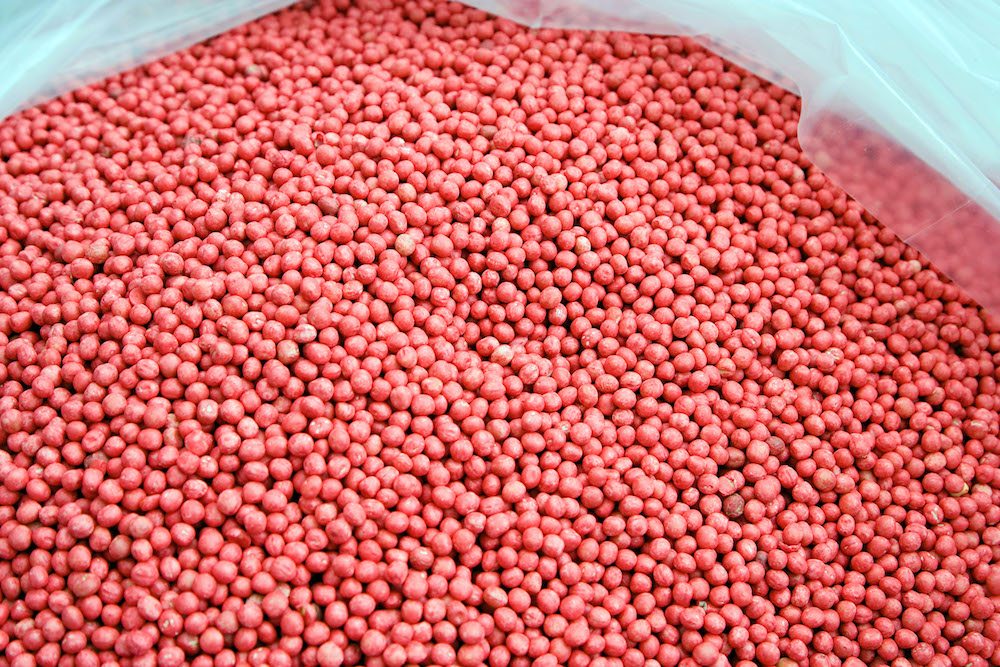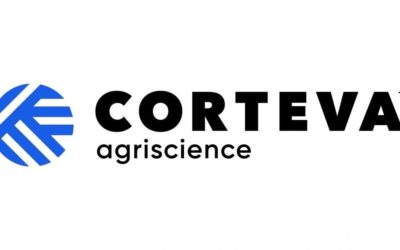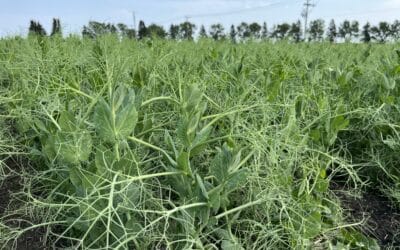As the technology and the application of seed treatments is becoming more effective, growers are turning to treated seed to give their crop a fighting chance against seed and soil-borne disease and insects. Early seeding is becoming more common in Alberta, however seeding into cold soils can be risky – the seed sits in the soil longer and is vulnerable to threats below the ground. To combat that, seed treatments are helping growers start their season off right.
“Treating seed is a lot like insurance,” says Harry Brook, crop specialist with Alberta Agriculture and Forestry. “Ideally, you’d be seeding into warm, moist soils for rapid emergence. But that’s the ideal and then there’s the reality. Early spring weather is unpredictable and growers have a lot of acres to cover. Seed treatments allow growers to seed when it works best for them without the negative impact early seeding can have on their crop.”
Brook says that ideally, soil temperatures would be a minimum of five degrees before seeding begins; however, today many growers attempt to seed as soon as the soil has defrosted. The general rule is the earlier a crop is seeded, the greater the yield potential. But that’s only true if it emerges strong and healthy. By keeping disease and insects at bay, seed treatments help offset the risks of a delayed emergence.
Some crops are treated more than others. Canola is treated with combination products that contain both fungicides and insecticides to combat soil-borne diseases as well as protection from flea beetle damage. For cereal growers, the use of seed treatments is becoming more of a requirement, as diseases such as smut, bunt, damping off and root rot are increasing in incidence. And as there is a resurgence of wireworms in Alberta, seed treatment insecticides for cereals become more important. The available seed treatment insecticides put the wireworms in a coma-like state so they are unable to feed during the critical period of emergence.
Tight rotations with little cropping variation have meant an almost province-wide buildup of disease inoculum in the soil, meaning that every season has the potential for damaging disease, regardless of weather the previous season.
“Seed treatments offer security against early season threats, but they won’t provide long-term protection,” says Brook. “The seed treatment will help you achieve a good seedling, but you may still need to apply a foliar fungicide or insecticide if the conditions warrant it.”
Brook cautions that good agronomics are still a crucial component at seeding. “Seeding is risky, and growers are participating in even riskier behaviour by shortening their rotation and seeding really early. Seed treatments are a relatively low-cost insurance. It may not pay every year, but as our disease and insect pressure increases, it will pay more often than not.”
New Regulations Standardize Commercial Seed Treatment Processes
Advances in seed treatment technology has produced products that are applied at lower rates for a reduced impact on the environment, coupled with the development of products with several modes of action to offer higher levels of crop protection. While some growers treat seed on-farm, much of the seed treated in Alberta is done by a commercial seed treater.
As commercial application of seed treatments becomes more commonplace, the rules for how certain seed treatments are transported, stored and applied have evolved. As of January 2018, commercial seed treaters that apply designated seed treatment products will be required to follow the standards under the Accredited Seed Treatment Operation Standards as developed by CropLife Canada in co-operation with industry and government groups. Under these standards, designated seed treatment products destined for commercial use on corn, canola and soybeans can only be handled by accredited facilities.
“Today, commercial treaters [that are handling certain products] have a set of industry standards that were developed to ensure [certain] seed treatment products are handled and stored safely,” says Russel Hurst, vice-president, Sustainability and Stewardship with CropLife Canada. “Commercial storage and handling facilities [that are handling restricted products] have to follow a set of practices that are checked every two years by a third-party auditor to ensure compliance.”
The set of uniform health and safety standards for the storage and handling of seed treated in Canada creates targeted solutions that contribute to improved safety and productivity. The standards were developed by a working group made up of members from industry, government and seed growers. While Alberta already has very high government requirements for commercial seed treatment facilities, these new standards were put in place to make sure everyone treating seed for commercial use is meeting or reaching these goals at a national level.
In Alberta, commercial seed treaters include seed treatment companies, agricultural retail facilities, seed growers who treat commercial seed and seed cleaning co-ops. The new standards include 76 protocols, 66 of which were already covered under existing government regulation, and 10 additional industry best management practices.
“For the long-term sustainability of the seed treatment industry, we needed to be involved in developing these standards in order to create a vibrant industry going forward,” says Hurst. “If we didn’t come up with these guidelines we risked having standards imposed on us that weren’t necessarily in the best interests of the industry.”
Effective January 2018, only seed treatment operations that have successfully completed an accredited seed treatment operations standards audit will be able to receive certain seed treatments for application on seed. However, not all seed treatments are on this designated list; only products that are deemed to pose elevated risk to people or the environment are placed on this “restricted-use” list.
“This no-ship policy is similar to what other sectors of the crop input industry have developed,” says Hurst. “The fertilizer industry, for example, has these types of protocols in place so that their products are treated with care. We aren’t necessarily saying anyone is doing anything wrong, we are just making sure we are all reaching toward the same standards.”
Hurst says there can be a fine line between rigorous and onerous standards, but he says the consultation process has been ongoing since 2009 and he thinks the standards developed today are obtainable by Alberta’s commercial seed treatment industry. While on-farm treaters are not subject to the same standards, they still are expected to follow the product label and use good management practices when treating their seed.
“These guidelines will likely be updated every five years unless a new regulation or new product is put in place that requires us to adjust our protocols,” says Hurst. “Growers want to protect their seed and their crop, and new products are always being added to our list of designated seed treatments. Our standards will change as products and growers’ use of them continues to evolve.”





